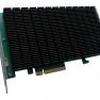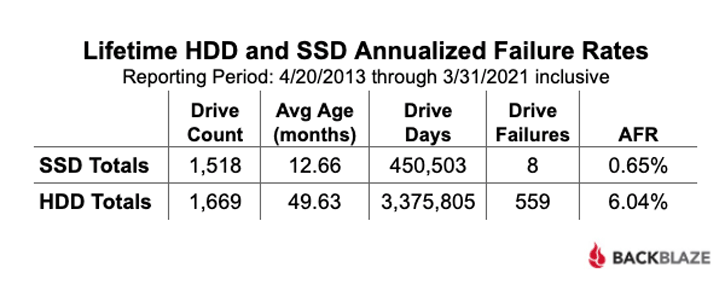We all know (well most of us) that datacenter giant Backblaze, from our many HDD failure rate reports. Withing the results they however have never posted the reliability on SSDs. Times are changing fast and they no offer their first results and show that SSDs are massively more reliable.
BackBlaze - We use SSD drives in several places, but we currently do not use them for storing customer data—that remains in the realm of hard disk drives. But one place we have both HDDs and SSDs is as boot drives for our storage servers. In our case, describing these drives as boot drives is a misnomer as this cohort is also used to store log files for system access, diagnostics, and more. In other words, these boot drives are regularly reading, writing, and deleting files in addition to their named function of booting a server at startup.A little over two years ago, Backblaze started using SSDs as boot drives. It was about that time we could start getting SSDs that were 200GB or so for less than $50 each, which was our price point for the 500GB hard drives we were buying.
What we have are two groups of drives, one HDDs and the other SSDs, which have performed the same functions in the same environment over time. The table below compares the failure rates in aggregate for Q1 2021 of our HDD and SSD boot drives.
Why didn’t we break these out by model? None of the models by themselves had enough drive days to be statistically relevant. In aggregate, the number of drive days is still on the lower side, but the obvious difference in the AFR between the HDD and SSD boot drives is eye-opening. If we look at the lifetime results for the HDD and SSD boot drives, the difference in AFR is less but still significant.
SSD Reporting Moving Forward
One obvious takeaway from these tables is that SSD drives fail less often than HDD drives, at least in this use case. But that ignores one important factor, drive age. If we focus on the age of each of the cohorts, there are potential cracks in our “SSD drives are better” supposition.The average age of the SSD drives is 12.7 months, and the average age of the HDD drives is 49.6 months. The oldest SSD drives are about 30 months old and the youngest HDD drives are 24 months old. The oldest HDD drives are nearly 96 months old—eight years old. Basically, the timelines for the age of the SSD and HDD drives don’t overlap very much and in general, drive failure rates typically increase as drive population ages. These two considerations make the conclusion that SSDs fail less often than HDD drives not as clear cut as it first seems. Over the coming months, we’ll dig into the data and align the SSD and HDD timelines to examine the HDD drives in their early years of use and we’ll publish those results. This will give us better insight into the failure rate profile over time for the HDD drives. In addition to the boot drives, we also utilize SSD drives for different use cases, for example on restore servers and so on. Over time, our goal is to instrument these drives as well without impacting performance, so we can build a library of SSD drive failure rates by use case.
BackBlaze starts to report on SSD reliability, which they are bigtime.



